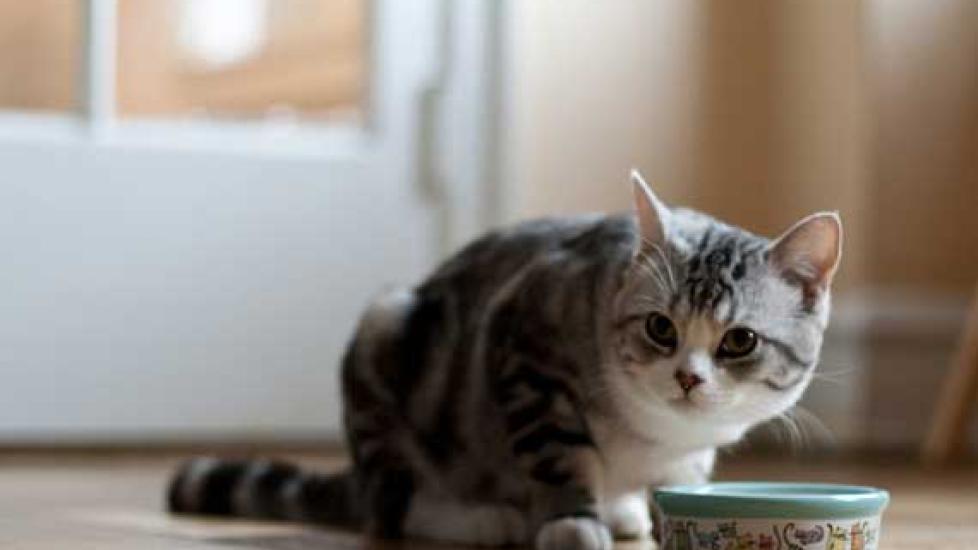How to Switch from Dry to Canned Cat Food
Cat owners need to decide whether they are going to feed dry kibble, canned food, or some combination of the two. People tend to pick dry food for its convenience and relatively lower cost, and some cats do just fine on a dry only diet. However, canned food more closely mimics a cat’s natural diet, being high in protein and water and low in carbohydrates.
Experience has shown that a number of diseases (e.g., diabetes mellitus, obesity, idiopathic cystitis) can be prevented and/or managed in some individuals when they are fed this type of diet.
If you find yourself in the position of having (or just wanting) to switch you cat from a dry to canned food, you may find the process more difficult than expected. Cats are creatures of habit. If they are fed the same type of food for an extended period of time, they may decide that this is what food is supposed to smell/feel/taste like and nothing else will do.
What is the best way to switch a cat from dry to canned food?
First, try the cold turkey approach. Some cats do take to canned food like they’ve been waiting for it all their lives. Remove all of the cat’s dry food before going to bed so your cat will be hungry when you wake. In the morning, put a small amount of room temperature or warmed canned food in your cat’s bowl, place it in its normal location, and then go about your normal business.
If your cat hasn’t eaten in 30 minutes or so, pick up the bowl and try again in 6-8 hours. It’s okay to repeat this process a couple of times, but don’t let your cat go without a meal for more than 24 hours. Prolonged fasting can cause cats to develop a potentially fatal condition called hepatic lipidosis.
Cats who continue to resist eating canned food for more than 24 hours require a different approach. Go back to the old, dry diet for several days but feed two discrete meals rather than leaving food out all the time. Look at the ingredient list on the dry food’s label and find a canned food that is a close match. This will minimize the differences in smell and taste.
Next, mix a small amount of the new canned food in with the old dry diet. Every day, gradually increase the amount of the canned and decrease the amount of the dry until your cat is eating only canned food. Best case scenario, this process will take a week or two, but some cats require a much slower transition. Look at your cat’s food bowl after every meal. If you notice that he or she is picking out the dry food and leaving the canned, try crushing the kibble into smaller pieces. Cats often have strong opinions regarding texture, so if your cat simply won’t eat your initial choice of canned food, try a different style (e.g., pate versus flaked or chunked).
Hunger can be your ally during this time. Only leave food out for about 30 minutes twice a day, but never let your cat go for longer than 24 hours without eating something. Making the switch from dry to canned food may require patience, but for many cats, the benefits make the ordeal worthwhile.

Dr. Jennifer Coates
Image: Tom Thai / Flickr
Related
Hepatic Lipidosis - Fatty Liver Disease in Cats
Nutrition's Role in Hepatic Lipidosis
